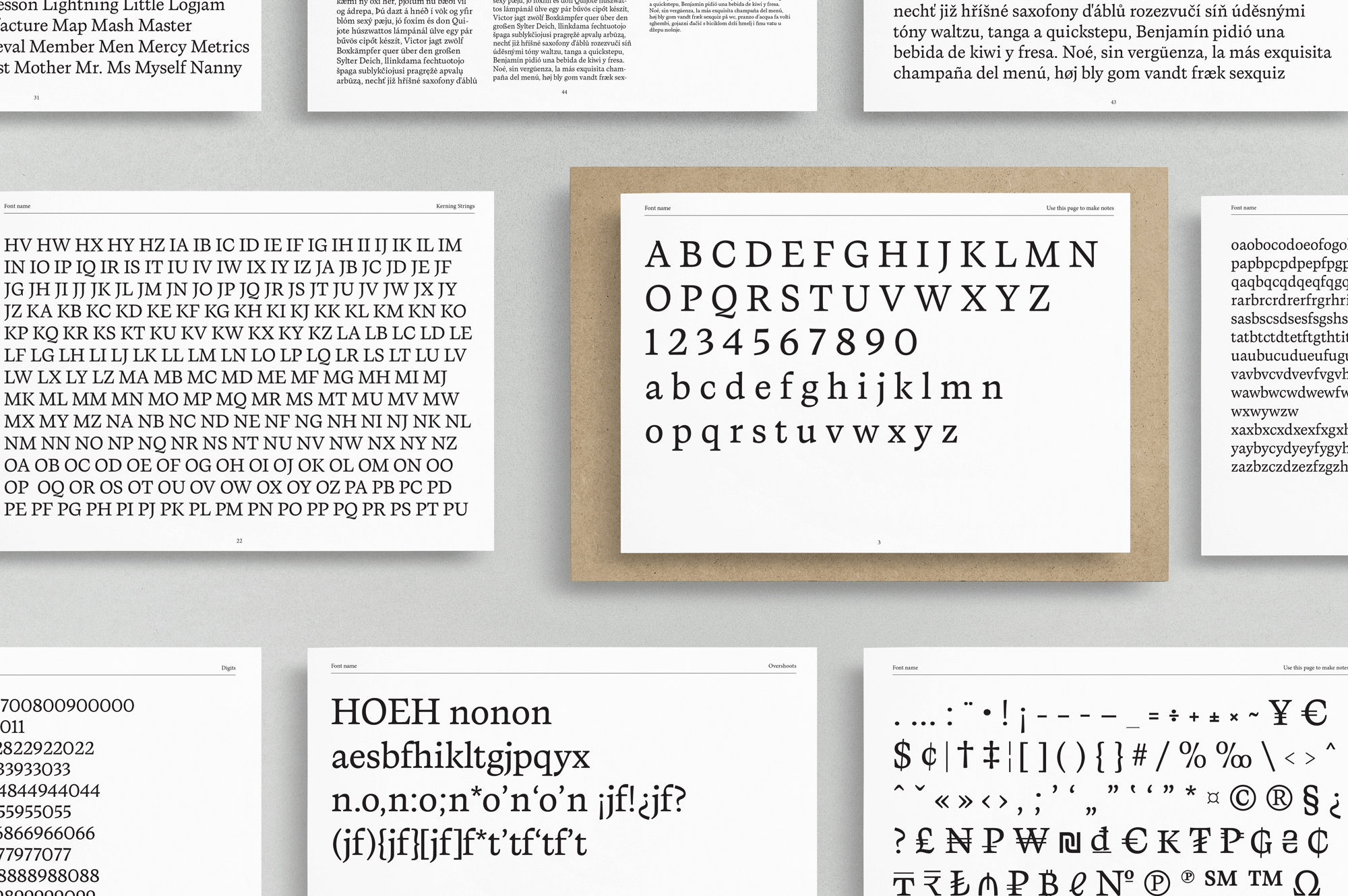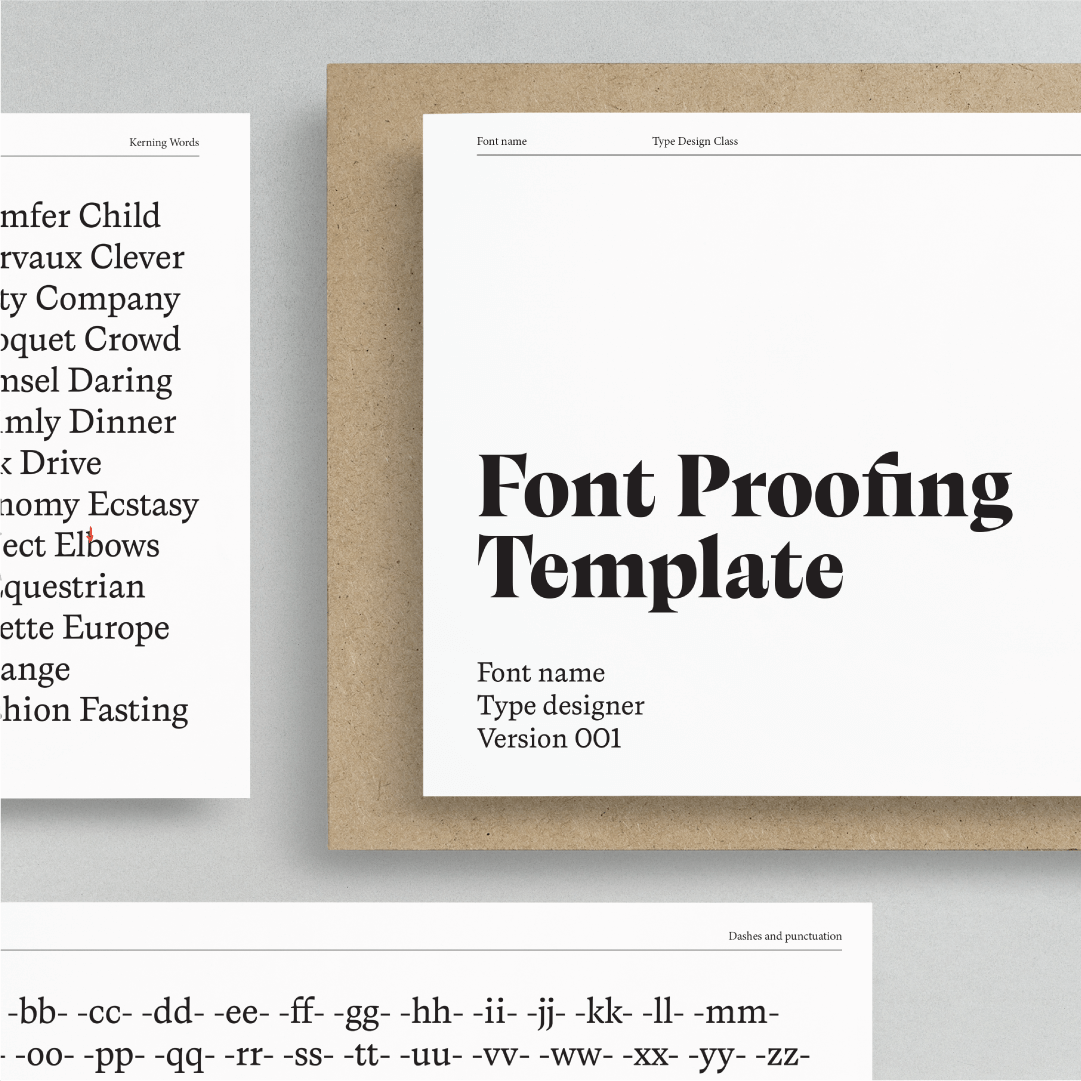What is Font Proofing?
As a type designer, you frequently aim to produce fonts that are not only aesthetically pleasing but also consistently and correctly work across all platforms and devices. This is where font proofing comes in.
But what is Font Proofing, and how do you do it?
Font proofing is the process of ensuring that a font displays correctly across all platforms and devices by checking it for technical issues like spacing and kerning, and OpenType features such as ligatures and stylistic sets. In order to confirm that the font is displayed consistently and without any issues, this involves testing it across a variety of operating systems, browsers, and devices, but also on paper.
Let’s break that down shall we:
Checking for Technical Errors
One of the most important aspects of font proofing is checking for technical errors. Technical errors can range from incorrect kerning between letters to incorrect character mapping (if you type an apostrophe, you don’t want to see a foot-mark). These errors can significantly impact the look and feel of the font and it is crucial to identify and correct them during the proofing process.
To check for technical errors, a font proofing template can be used. This template is a document that lists all of the characters in a font and provides a space for proofing each one. It should include things like spacing, kerning pairs, paragraphs and information about the character's performance at different sizes. This information can be used to check for consistency in the font and identify any technical errors which can be quickly fixed in your font design.
The Font Proofing Indesign Template is a great tool to check the spacing and kerning of printed fonts. This comprehensive template has everything required for a thorough proofreading experience.
This template includes:
Basic Latin characters for notes
Spacing groups
Kerning groups
Kerning words
Dashes and punctuation
Symbols and parenthesis
A variety of words and paragraphs
Large-character pages at the beginning of the template are for making notes about your letterforms that you can later change in your font files. By saving you time and ensuring that your fonts are flawlessly polished, this template is made to make font proofing as easy and effective as possible. By editing the Paragraph Styles you can easily adjust the fonts to your own.





